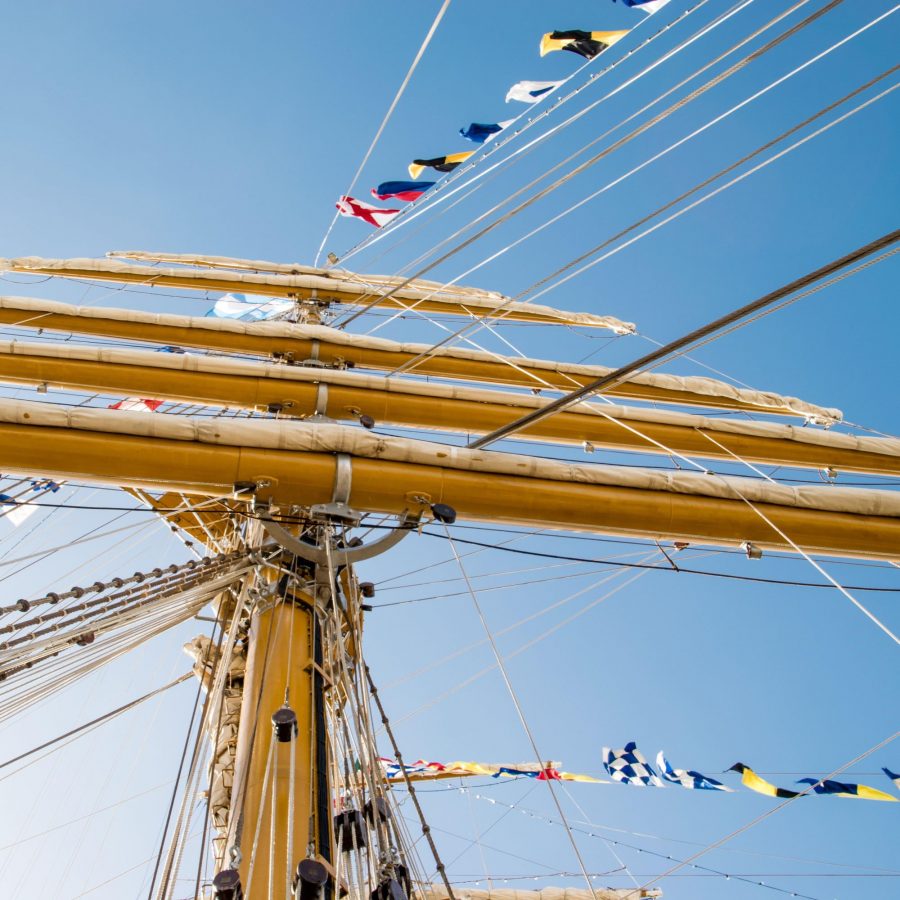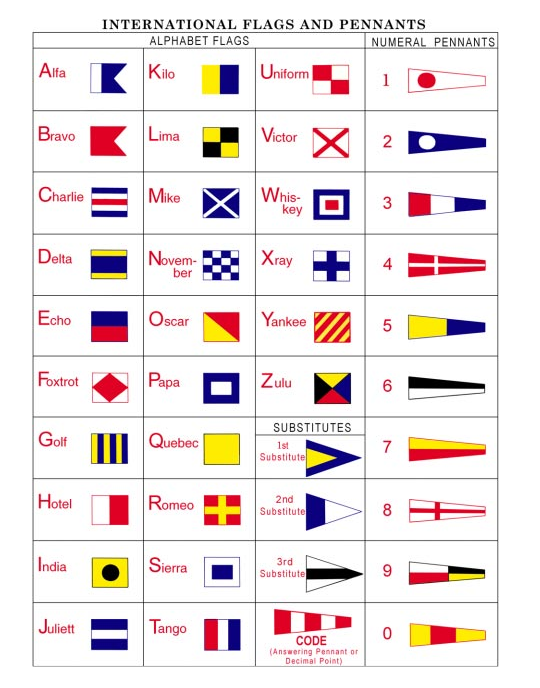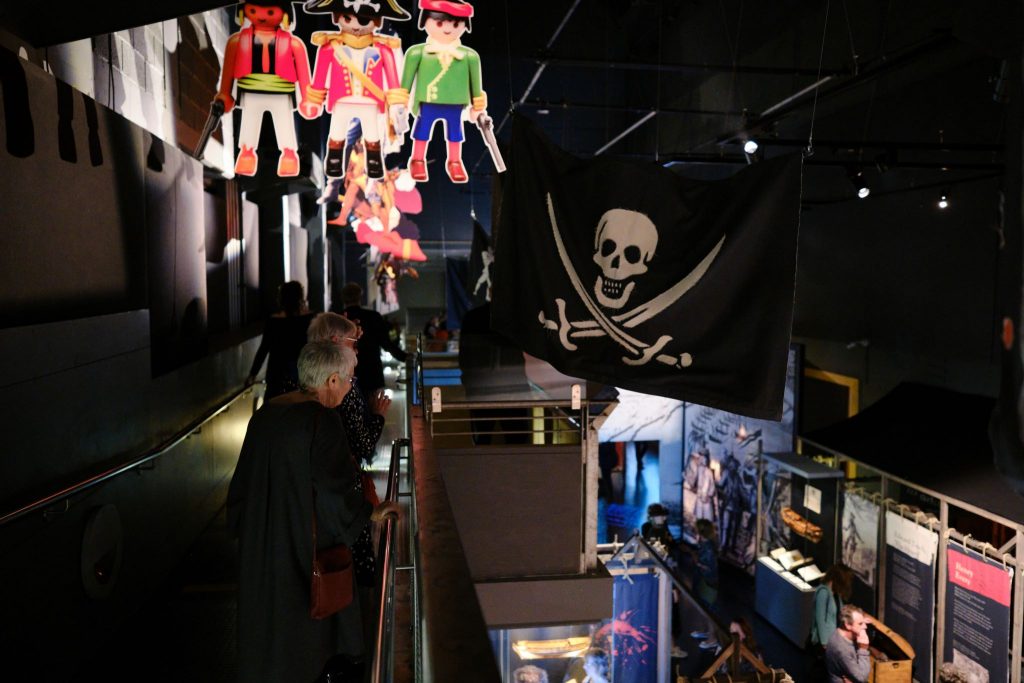

In a world where there are thousands upon thousands of languages spoken, having a universal code to communicate through is invaluable to sailors and seafarers navigating their way across the high seas.
For hundreds of years flags have been used to allow the crew of one ship to ‘speak’ with another, with the designs of some being so iconic that they have become a staple of pirate-related pop culture.

The International Code of Signals (ICS) is a standardised series of signals – encompassing the use of flags – that vessels are expected to use to communicate with one another. It is designed in such a way that it can be universally understood regardless of what language the crew may speak.
Its history can be traced back to 1817, when a novelist and Royal Navy officer called Captain Frederick Marryat published ‘A Code of Signals for the Merchant Service’, a series of 16 flags and pennants that could be raised in combination with one another to send particular messages. It quickly became the most used series of flag signals across the world and by 1855 it had evolved into a form of the International Code of Signals that is used today.
The ICS consists of flags that represent numbers from 0 to 9 and the 26 letters of the alphabet. Each flag also has its own specific meaning separate from whatever letter it represents. For instance, the flag that represents the letter ‘A’ can also be raised to indicate that the vessel can’t move because divers are working underwater and that others should keep clear. Meanwhile, the flag that represents the letter ‘P’ – a dark blue rectangle with a smaller white rectangle inside – is known as ‘Blue Peter’ and is used to indicate that all crewmembers should return to the ship as it is ready to set sail. It was this flag that inspired the name of the BBC’s children’s TV series.
Under the ICS, flags can be used in combination with one another to send longer messages, while signals consisting of only one flag are used for very urgent or simple messages.
All of the flags used by the ICS are either black, white, red, dark blue or yellow – or a combination thereof. This is to make sure that they can be picked out relatively easily with either the naked eye or using binoculars.
Even several hundred years before the adoption of the ICS, there were a couple of flags whose simple colour choices made their meaning universally understood.
One was a plain red flag. Initially flown by English privateer ships to distinguish themselves from the Royal Navy, it came to be used by a wider range of ships to signal that they would give no quarter in an impending battle and would not be accepting any surrender.
A plain black flag, in contrast, indicated that they would accept a surrender if any valuable cargo were handed over without a fight.

The Jolly Roger on display at National Maritime Museum Cornwall’s Pirates exhibition.
Arguably the most famous nautical flag of them all, the Jolly Roger is synonymous with pirates and piracy.
The skull and crossbones that make the flag so iconic are believed to have been drawn from a form of shorthand often used in ships’ logs, where a skull would be drawn to indicate that there had been a death onboard. And, while it is usually thought of as having a black background, many early Jolly Rogers actually had a red background. As mentioned earlier, a red flag signalled that no mercy was to be given.
Many famous pirates had their own slightly different versions of the Jolly Roger. For instance, the flag of Blackbeard – or Edward Teach – depicted a skeleton using a spear to stab a heart while raising a glass with the other hand in a toast to the devil. Edward Low’s Jolly Roger also featured a full skeleton, albeit drawn in red rather than white.
The exact origins of the name ‘Jolly Roger’ are not known. It could be that it was derived from the French phrase ‘joli rouge’, meaning ‘pretty red’. Alternatively, it could have been drawn from the phrase ‘Old Roger’, which was a name used to refer to the Devil.
Despite its reputation, the Jolly Roger did not and does not belong solely to the realm of piracy. In fact, the Royal Navy’s Submarine Service has been flying the Jolly Roger on certain occasions since the First World War. In 1914 the captain of a British submarine – HMS E9 – flew the flag after sinking a German warship, in response to comments made by a British admiral in 1901 that likened submarines and their crews to pirates because of their ‘underhand’, ‘unfair’ and ‘un-English’ nature.
Ever since, Royal Navy submarines have been allowed to fly the Jolly Roger upon returning from a successful mission. The most recent instance of this happening was in 2011 when HMS Triumph returned to Devonport from a mission in the Mediterranean.
Alongside the skull and crossbones, the crew of the submarine can add various symbols to the flag to represent different things.

National Maritime
Museum Cornwall Trust
Discovery Quay
Falmouth Cornwall
TR11 3QY
View Map
See our opening hours
Tel: +44(0)1326 313388
Email: enquiries@nmmc.co.uk